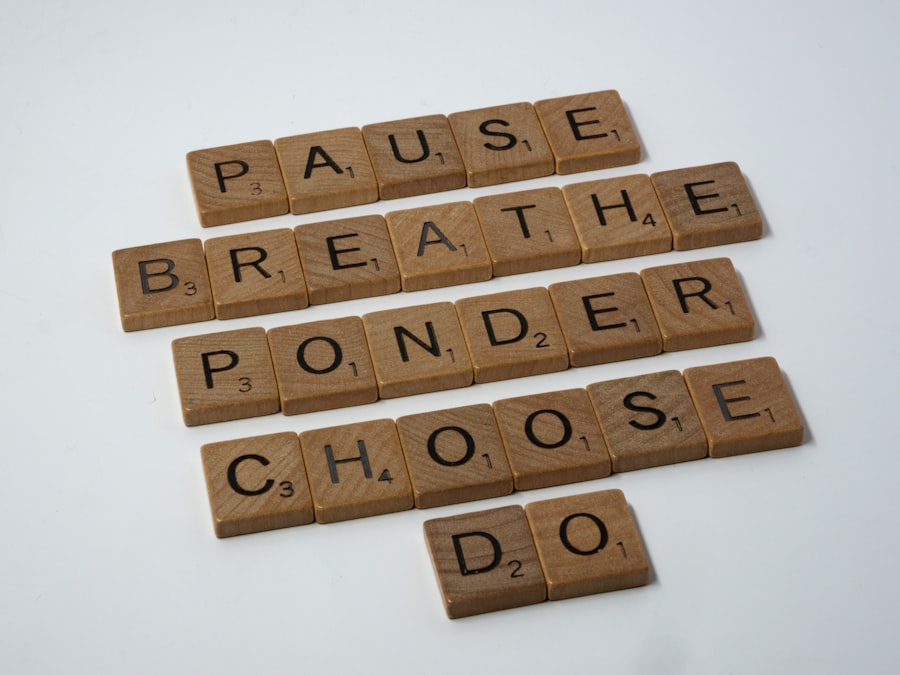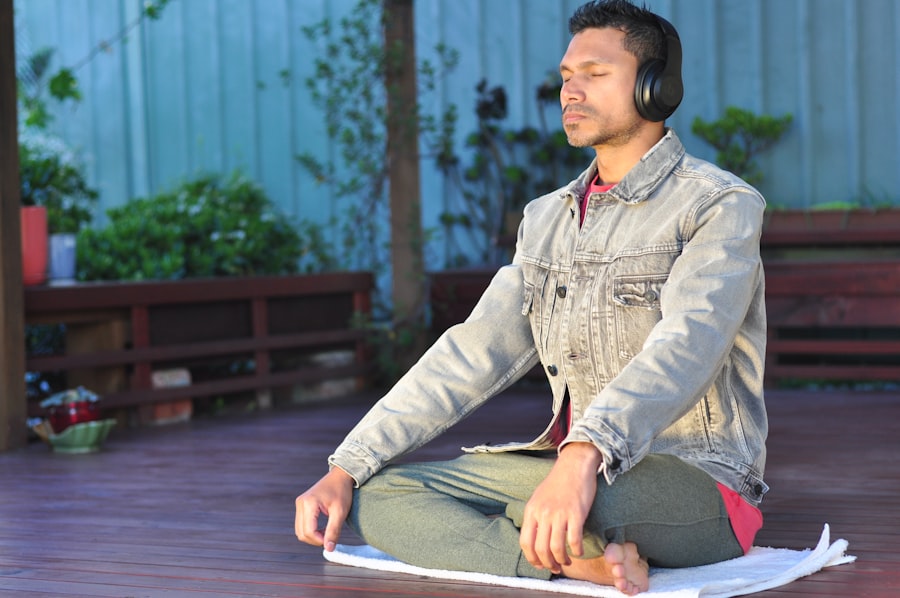In today’s fast-paced world, stress has become an almost ubiquitous part of daily life. The demands of work, family, and personal responsibilities can often feel overwhelming, leading to a constant state of tension and anxiety. However, finding effective ways to manage stress does not always require extensive time commitments or elaborate strategies.
In fact, incorporating simple, 10-minute stress relief habits into one’s routine can yield significant benefits for mental and emotional well-being. These brief yet impactful practices can help individuals regain a sense of control, calm their minds, and enhance their overall quality of life. The beauty of these 10-minute habits lies in their accessibility.
They can be seamlessly integrated into even the busiest schedules, allowing individuals to carve out moments of tranquility amidst the chaos. Whether it’s during a lunch break, while waiting for an appointment, or even at home after a long day, these quick stress relief techniques can be employed anywhere and at any time. By committing to just ten minutes a day, individuals can cultivate resilience against stress and foster a more balanced lifestyle.
Key Takeaways
- Deep breathing techniques can quickly reduce stress and tension in just 10 minutes.
- Mindfulness meditation is an effective way to relieve stress and promote relaxation in a short amount of time.
- Stretching and yoga can provide instant stress relief by releasing tension in the body and calming the mind.
- Quick workouts, such as a brisk walk or a few minutes of jumping jacks, can help release stress and boost mood.
- Journaling and gratitude practices can be powerful tools for relieving stress and promoting a positive mindset in just 10 minutes.
Deep Breathing Techniques for Stress Relief
Deep breathing techniques serve as one of the most effective tools for immediate stress relief. When individuals experience stress, their breathing often becomes shallow and rapid, which can exacerbate feelings of anxiety. By consciously engaging in deep breathing exercises, one can counteract this physiological response and promote relaxation.
A simple technique involves inhaling deeply through the nose for a count of four, holding the breath for four counts, and then exhaling slowly through the mouth for another four counts. This rhythmic pattern not only calms the mind but also helps to lower heart rates and reduce blood pressure. Moreover, deep breathing can be practiced anywhere, making it an ideal choice for those seeking quick relief.
Whether in a crowded office or a quiet park, taking just ten minutes to focus on one’s breath can create a profound sense of peace. As individuals become more attuned to their breathing patterns, they may find that they can tap into this calming technique whenever stress arises. Over time, regular practice can lead to improved emotional regulation and a greater sense of overall well-being.
Mindfulness Meditation for Quick Stress Relief

Mindfulness meditation is another powerful method for alleviating stress in just ten minutes. This practice encourages individuals to focus on the present moment without judgment, allowing them to observe their thoughts and feelings without becoming overwhelmed by them. By dedicating a short period each day to mindfulness meditation, individuals can cultivate a greater awareness of their internal experiences and develop healthier responses to stressors.
To begin a mindfulness meditation session, one can find a quiet space and sit comfortably. Closing the eyes and focusing on the breath can help anchor the mind in the present moment. If thoughts begin to wander, it is essential to gently redirect attention back to the breath without self-criticism.
Even a brief ten-minute session can lead to increased clarity and reduced anxiety levels. As individuals practice mindfulness regularly, they may notice an enhanced ability to manage stress in their daily lives, leading to improved emotional resilience.
Stretching and Yoga for Instant Stress Relief
| Technique | Duration | Frequency |
|---|---|---|
| Deep Breathing | 5-10 minutes | 2-3 times a day |
| Neck Stretches | 2-3 minutes | Every hour |
| Shoulder Rolls | 2-3 minutes | Every hour |
| Child’s Pose | 3-5 minutes | Once a day |
| Corpse Pose | 5-10 minutes | Once a day |
Stretching and yoga are excellent physical practices that not only promote flexibility but also serve as effective stress relievers. Engaging in gentle stretches or yoga poses for just ten minutes can help release built-up tension in the body, which often accompanies stress. Simple movements such as neck rolls, shoulder shrugs, or forward bends can alleviate physical discomfort while simultaneously calming the mind.
Yoga, in particular, combines physical postures with breath control and meditation, creating a holistic approach to stress relief. A few minutes spent in poses like Child’s Pose or Cat-Cow can foster relaxation and encourage mindfulness. The focus on breath during yoga practice enhances the connection between body and mind, allowing individuals to let go of stress more easily.
By incorporating stretching or yoga into their daily routine, individuals can create a sanctuary of calmness that helps them navigate life’s challenges with greater ease.
Quick Workouts to Release Stress and Tension
For those who prefer a more vigorous approach to stress relief, quick workouts can be an excellent option. Engaging in physical activity releases endorphins—natural mood lifters that help combat feelings of stress and anxiety. A ten-minute workout can take many forms, from high-intensity interval training (HIIT) to a brisk walk or even dancing to favorite music.
The key is to elevate the heart rate and engage the body in movement. These short bursts of exercise not only improve physical health but also provide an immediate sense of accomplishment and empowerment. Individuals may find that even a brief workout session helps clear their minds and boosts their energy levels.
By making quick workouts a regular part of their routine, they can develop healthier coping mechanisms for dealing with stress while also enhancing their overall fitness.
Journaling and Gratitude Practices for Stress Relief

Journaling is a powerful tool for processing emotions and alleviating stress. Taking just ten minutes to write down thoughts and feelings can provide clarity and insight into what is causing anxiety or tension. This practice allows individuals to externalize their worries rather than keeping them bottled up inside.
By putting pen to paper, they can explore their emotions more deeply and identify patterns that may contribute to their stress levels. In addition to journaling about challenges, incorporating gratitude practices into this routine can further enhance its effectiveness. Spending a few moments each day writing down things one is grateful for shifts focus away from negativity and fosters a more positive mindset.
This combination of reflection and gratitude not only helps reduce stress but also cultivates resilience and appreciation for life’s simple joys.
Listening to Calming Music for Stress Relief
Music has long been recognized as a powerful medium for influencing emotions and reducing stress levels. Listening to calming music for just ten minutes can create an immediate sense of relaxation and tranquility. The soothing melodies and gentle rhythms have the ability to lower heart rates and promote feelings of peace.
Whether it’s classical music, nature sounds, or ambient tracks, finding the right genre that resonates personally can enhance the experience. Creating a dedicated playlist of calming music can serve as an effective tool for quick stress relief throughout the day. Individuals may choose to listen while working, during breaks, or even before bedtime to unwind after a hectic day.
By incorporating music into their daily routine, they can create moments of serenity that help counterbalance life’s inevitable stresses.
Taking Short Walks for Stress Relief
Taking short walks is another simple yet effective way to relieve stress in just ten minutes. Stepping outside for a brief stroll allows individuals to disconnect from their immediate surroundings and immerse themselves in nature or their environment. The act of walking itself promotes physical movement that releases tension while also providing an opportunity for reflection or mindfulness.
During these walks, individuals can focus on their surroundings—the sights, sounds, and smells—allowing them to engage fully with the present moment. This practice not only helps clear the mind but also encourages physical activity that benefits overall health. By making short walks a regular habit, individuals can create a refreshing break from daily pressures while enhancing their mental clarity.
Using Aromatherapy for Quick Stress Relief
Aromatherapy is an effective method for promoting relaxation through the use of essential oils. Certain scents have been shown to have calming effects on the mind and body, making them ideal for quick stress relief. For instance, lavender is renowned for its soothing properties, while citrus scents like lemon or orange can uplift mood and energize the spirit.
Incorporating aromatherapy into daily routines can be as simple as using an essential oil diffuser or applying diluted oils directly onto pulse points. Taking ten minutes to engage with these scents—whether through inhalation or topical application—can create an immediate sense of calmness and well-being. By exploring different essential oils and finding those that resonate personally, individuals can develop a personalized approach to managing stress through scent.
Creating a Relaxing Environment for Instant Stress Relief
The environment plays a significant role in influencing one’s mental state. Creating a relaxing space at home or work can serve as an effective strategy for quick stress relief. This may involve decluttering the area, adding soft lighting, or incorporating elements such as plants or calming artwork that evoke feelings of tranquility.
Taking ten minutes to enhance one’s surroundings can lead to immediate improvements in mood and overall well-being. Individuals may choose to light candles or incense, play soft music, or even arrange comfortable seating areas where they can unwind during stressful moments. By intentionally designing spaces that promote relaxation, they create sanctuaries that support mental clarity and emotional balance.
Conclusion and Tips for Implementing 10-Minute Stress Relief Habits
In conclusion, integrating 10-minute stress relief habits into daily life offers individuals practical tools for managing stress effectively. From deep breathing techniques to mindfulness meditation, stretching exercises, quick workouts, journaling practices, calming music, short walks, aromatherapy, and creating relaxing environments—each method provides unique benefits that contribute to overall well-being. The key lies in consistency; by committing to these practices regularly, individuals can cultivate resilience against stressors while enhancing their quality of life.
To implement these habits successfully, it is essential for individuals to identify which techniques resonate most with them personally. Experimenting with different methods allows them to discover what works best in various situations. Additionally, setting aside dedicated time each day—whether in the morning or during breaks—can help establish these practices as integral parts of their routine.
Ultimately, by embracing these 10-minute habits with intention and mindfulness, individuals can navigate life’s challenges with greater ease and grace.
If you’re looking to incorporate quick stress relief habits into your daily routine, you might also be interested in exploring how different environments can impact your stress levels. An intriguing read on this topic is the article about The Role of Digital Screen Displays in the Evolution of Retail Environments. This article delves into how modern retail spaces are evolving with digital displays, which can influence consumer behavior and potentially affect stress levels. Understanding these dynamics can provide insights into how your surroundings might be optimized for a more calming experience, complementing your stress relief practices.
FAQs
What are some effective stress relief habits that can be done in 10 minutes a day?
Some effective stress relief habits that can be done in 10 minutes a day include deep breathing exercises, mindfulness meditation, progressive muscle relaxation, and taking a short walk.
How does deep breathing help in relieving stress?
Deep breathing helps in relieving stress by activating the body’s relaxation response, reducing the heart rate, lowering blood pressure, and promoting a sense of calm and well-being.
What is mindfulness meditation and how does it help in reducing stress?
Mindfulness meditation involves focusing on the present moment and accepting it without judgment. It helps in reducing stress by promoting relaxation, reducing negative emotions, and improving overall mental well-being.
What is progressive muscle relaxation and how does it help in managing stress?
Progressive muscle relaxation involves tensing and then relaxing each muscle group in the body, promoting physical relaxation and reducing the symptoms of stress such as muscle tension and anxiety.
How can taking a short walk help in relieving stress?
Taking a short walk can help in relieving stress by increasing the production of endorphins, improving mood, reducing muscle tension, and providing a break from stressful situations.
Are these stress relief habits backed by scientific research?
Yes, these stress relief habits are backed by scientific research and have been shown to be effective in reducing stress and promoting overall well-being.











